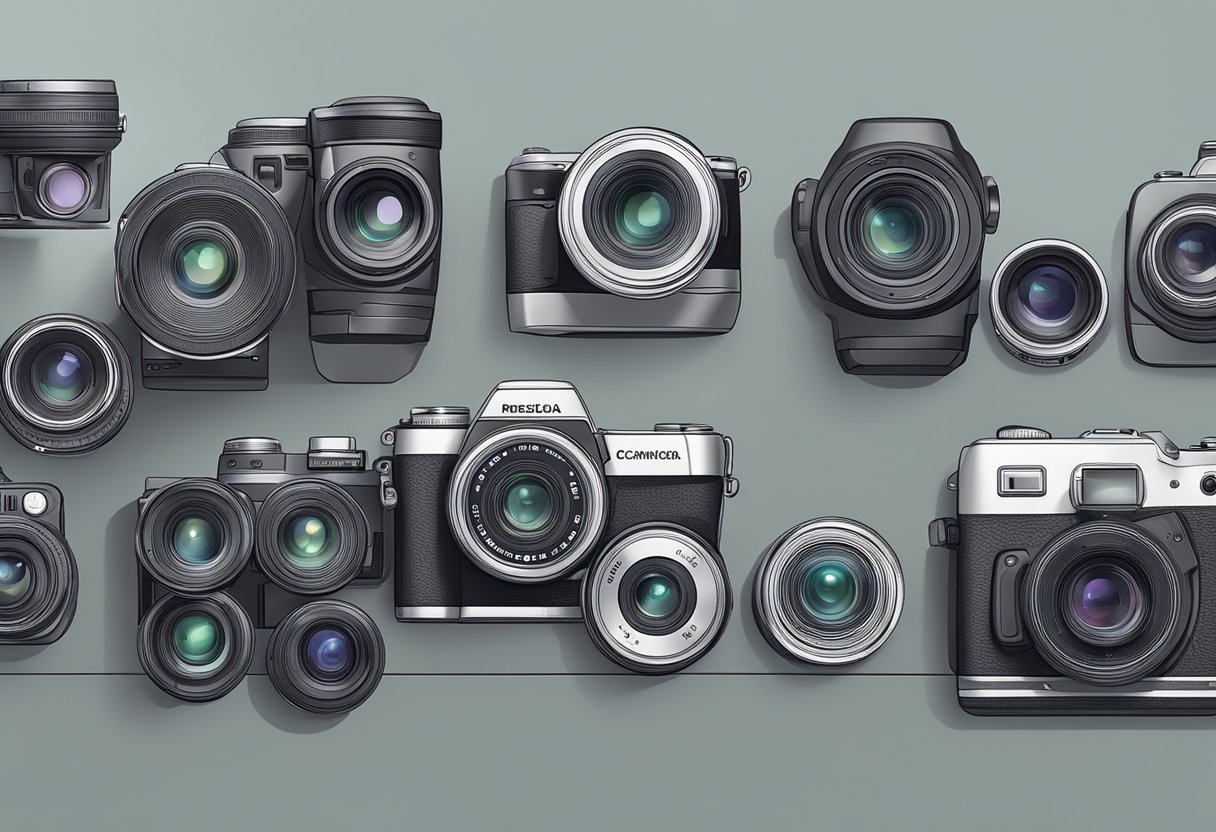Have you ever heard someone say that the camera adds 10 pounds? If you’ve ever been photographed or filmed, you may have wondered if there’s any truth to this popular saying. Some people believe that cameras have a magical ability to make you look heavier than you actually are. But is there any scientific evidence to support this claim?

The idea that cameras add 10 pounds is a common myth that has been around for decades. It’s often used to explain why people may look different in photos than they do in real life. However, the truth is that cameras don’t actually add any weight to your body. So why do so many people believe this myth? And what factors can influence how you look in photos? In this article, we’ll explore the science behind the camera and weight myth, and provide some tips for looking your best in photos.
Optical Science Behind Cameras and Weight Perception
When you see yourself in a photograph, you might notice that you look heavier than you actually are. This is a common belief that cameras add 10 pounds to a person’s appearance. However, the truth is more complex than that.
The Role of Focal Length
The focal length of a lens determines the angle of view and magnification of the image. A longer focal length will magnify the subject, making it appear larger and closer. Conversely, a shorter focal length will have a wider angle of view, making the subject appear smaller and farther away.
When it comes to weight perception, the focal length of the lens can play a role. A telephoto lens, which has a longer focal length, can compress the image and make the subject appear flatter. This can make the subject appear wider and therefore heavier. On the other hand, a wide-angle lens, which has a shorter focal length, can exaggerate perspective and make the subject appear thinner.
Lens Distortion and Body Shape
Another factor that can affect weight perception in photographs is lens distortion. Lens distortion occurs when the lens does not accurately represent the shape of the subject. This can cause straight lines to appear curved or objects to appear stretched or compressed.
In terms of weight perception, lens distortion can make the subject appear wider or narrower than they actually are. For example, barrel distortion can make the subject appear wider, while pincushion distortion can make them appear narrower.
It is important to note that lens distortion is not always a bad thing. In fact, it can be used creatively to create unique and interesting images. However, it is important to be aware of its effects and use it intentionally.
In conclusion, the optical science behind cameras and weight perception is complex and multifaceted. The focal length of the lens and lens distortion can both play a role in how the subject appears in the photograph. By understanding these factors, you can use them to your advantage and create images that accurately represent your subject.
The Impact of Camera Angles and Perspective
When it comes to capturing portraits, the angle of the camera can have a significant impact on the final image. Choosing the right angle for portraiture is crucial to ensure that the subject looks their best.
Choosing the Right Angle for Portraiture
The angle of the camera can affect the way a subject’s face looks in a portrait. If the camera is positioned too high, it can make the subject’s face appear shorter and wider. On the other hand, if the camera is positioned too low, it can make the subject’s face appear longer and narrower. Finding the right angle for the subject’s face shape is key to capturing a flattering portrait.
Another important factor to consider when choosing the right angle is the field of view. A wider field of view can make the subject appear smaller, while a narrower field of view can make the subject appear larger.
Perspective and Depth Perception
Perspective and depth perception can also play a role in how the camera adds weight to the subject. A wide-angle lens can exaggerate the size of the subject’s body by stretching out the edges and corners of the frame. This can make the subject appear larger than they actually are.
On the other hand, a telephoto lens can compress the image, making the subject appear flatter and thinner. This effect can be used to create a more flattering portrait.
In conclusion, the impact of camera angles and perspective on the final image cannot be overlooked. Choosing the right angle for portraiture and understanding how perspective and depth perception can affect the final image is crucial to capturing a flattering portrait.
Lighting and Its Effect on Appearance
The Influence of Light and Shadows
The way light falls on your subject can have a significant impact on how they appear in a photograph. Light can create shadows that can change the appearance of a person’s face and body. For example, direct lighting can create harsh shadows that can make your subject appear more angular and less attractive. On the other hand, diffused lighting can create softer shadows that can make your subject appear more attractive.
In addition to the direction of light, the quality of light can also affect the appearance of your subject. Soft, diffused light can create a flattering effect on your subject, while harsh, direct light can create unflattering shadows. Therefore, it is important to pay attention to the quality of light when taking photographs.
Bad Lighting Versus Flattering Lighting
Bad lighting can make your subject appear less attractive and can even add weight to their appearance. For example, fluorescent lighting can create a greenish tint that can make your subject appear sickly. Similarly, overhead lighting can create unflattering shadows that can make your subject appear heavier.
On the other hand, flattering lighting can make your subject appear more attractive and can even make them appear slimmer. For example, side lighting can create a slimming effect by creating shadows that make your subject appear more angular. Additionally, backlighting can create a halo effect around your subject that can make them appear more attractive.
In conclusion, lighting plays a crucial role in how your subject appears in a photograph. By paying attention to the direction and quality of light, you can create flattering lighting that can make your subject appear more attractive and even slimmer.
Common Misconceptions About Cameras and Weight
When it comes to portrait photography, there are many misconceptions about how cameras affect the way we look. One of the most common myths is that cameras add ten pounds to our appearance. However, this is not entirely true.
Debunking the ‘Camera Adds Ten Pounds’ Myth
The idea that cameras add ten pounds to our appearance is a popular myth that has been perpetuated for years. However, the truth is that cameras do not add weight to our bodies. Instead, the way we look in photographs is influenced by a variety of factors, including our posture, the angle of the camera, and the lighting.
One of the main reasons why people believe that cameras add weight is because of the way that photographs are framed. When we take a photograph, we are capturing a two-dimensional image of a three-dimensional object. As a result, the way that we appear in photographs can be distorted, depending on the angle of the camera and the position of our body.
Realistic Expectations in Portrait Photography
When it comes to portrait photography, it’s important to have realistic expectations about the way that you will look in your photographs. While cameras do not add weight to our bodies, they can still capture unflattering angles or lighting that may make us appear heavier than we actually are.
To get the best results from your portrait photography session, it’s important to work with a skilled photographer who can help you to pose in a way that flatters your body and showcases your best features. Additionally, it’s important to choose clothing and accessories that make you feel confident and comfortable, as this will help you to feel more relaxed and natural in front of the camera.
In conclusion, while the myth that cameras add ten pounds to our appearance is not entirely true, it is still important to be mindful of the way that we pose and present ourselves in front of the camera. By working with a skilled photographer and having realistic expectations, you can ensure that your portrait photography session is a success.
Post-Processing and Its Role in Image Perception

The Power of Photoshop
Post-processing software such as Adobe Photoshop has revolutionized the way we view and manipulate images. It allows you to adjust color, contrast, and exposure, as well as remove blemishes and other imperfections. Photoshop can also be used to manipulate body proportions, including making a subject appear slimmer or more muscular.
While post-processing can be a powerful tool for enhancing images, it can also be used to alter reality and create unrealistic expectations. For example, it is not uncommon for magazines to use Photoshop to make models appear thinner or to remove wrinkles and other signs of aging. This can create an unrealistic standard of beauty that is impossible for most people to achieve.
Ethical Considerations in Image Alteration
When it comes to post-processing, it is important to consider the ethical implications of altering images. While it may be tempting to make a subject appear thinner or more attractive, it is important to remember that these alterations can have a negative impact on body image and self-esteem.
It is also important to be transparent about any alterations made to an image. If you are a photographer or graphic designer, it is important to disclose any post-processing that has been done to an image. This can help to build trust with your clients and ensure that they are aware of any changes that have been made.
In conclusion, post-processing can be a powerful tool for enhancing images, but it is important to use it responsibly and ethically. By being transparent about any alterations made to an image, you can help to build trust with your clients and ensure that they are aware of any changes that have been made.
